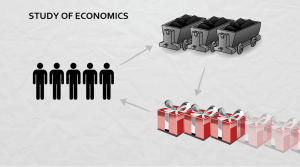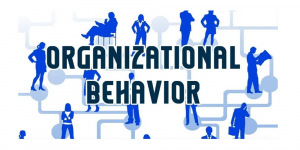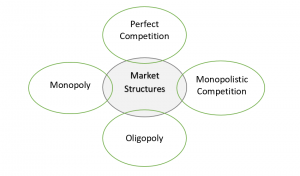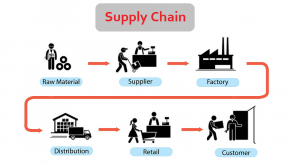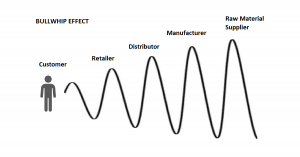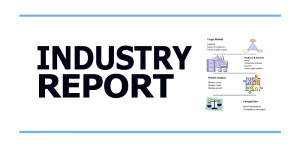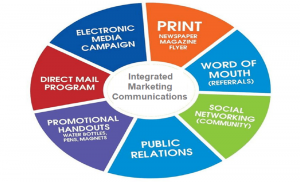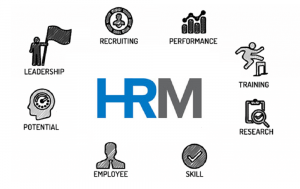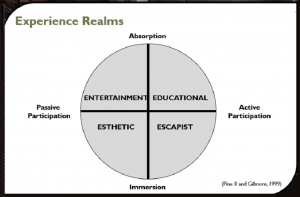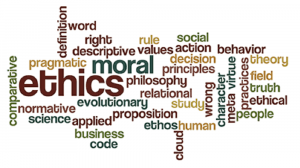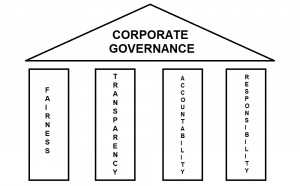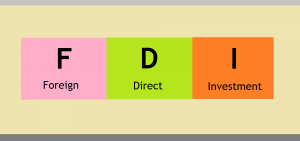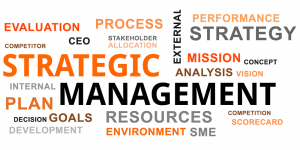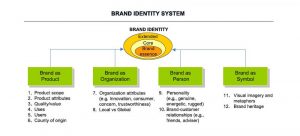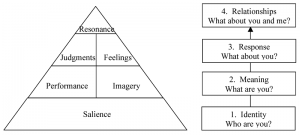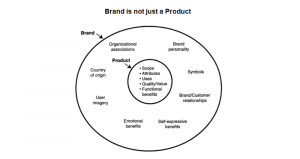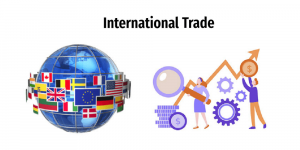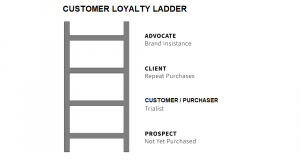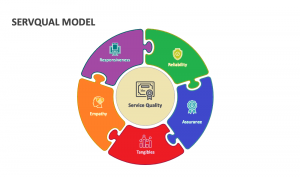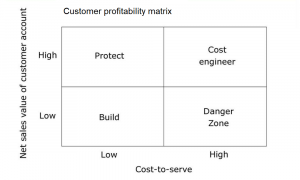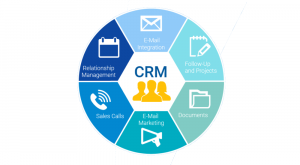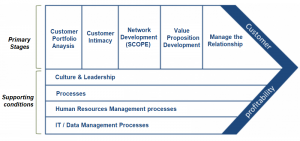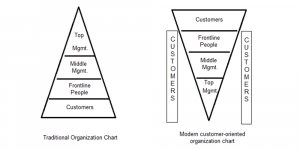Stability of the Market Economy Classical/Neoclassical View The economy is inherently stable. Any instability is a temporary phenomenon as the market (forces of demand and supply) has strong self-correcting tendencies which make it stable. For example, this is highlighted by: The market for loanable funds The important characteristics of this market are: The economy’s output […]
Goldilocks Economy Explained
A Goldilocks economy is an ideal economic state where every thing is economic stability. There is optimal growth, low inflation, full employment, balanced saving and spending. In such an economy, there is no risk of high inflation or recession. In the economic climate, there are three basic conditions: hot, cold and warm. A hot climate […]
What is Organization?
What is an organisation? An ‘organisation’ is a group of individuals working together to achieve one or more objectives. Although organisations have been defined differently by different theorists, virtually all definitions refer to five common features: they are composed of individuals and groups of individuals they are oriented towards achieving collective goals they consist of […]
Financial Statements: Types and How to Interpret
Financial statements are important documents that provide a summary of a company’s financial performance and position, it enables stakeholders to evaluate profitability, solvency, liquidity, and overall financial health of the company. The three main types of financial statements are: Balance sheet Income statement Cash flow statement Financial statements are typically prepared and presented to shareholders, […]
Types of Market Structures Explained
Market structure refers to how a market is setup, its organizational characteristics and the level of competition within the market. Market structure influences pricing, product differentiation, and other market dynamics. Perfect Competition In a perfect competition market structure, there are many buyers and sellers. There is no one big seller that dominates the market. Monopolistic […]
Measures of Economic Activity and Wellbeing
The learning outcomes for Economics are very broad and require us to take a critical perspective on economics. Thus, we cannot simply go through the typical introduction to economics topics such as the supply/demand model, perfect competition, monopoly, macroeconomic income determination and the like. We do go through each of these topics but we also […]
Economics: Principles, Theories, Models
Economics is about making efficient use of scare resources. The study of economics includes three important concepts: scarcity, choice, and opportunity cost. The main economic problem of the individual, business units and society is that there is scarcity of resources because of which decisions related to allocation need to be made. Economics: Basics Allocation of […]
Transportation in Supply Chain: Concepts & Theories
Transportation refers to the movement of product from one location to another. Products manufactured by companies are rarely produced and consumed in the same location. Hence transportation plays an important factor. Key Learnings: Align transportation strategy with competitive strategy Consider both in-house and outsourced transportation Use technology to improve transportation performance Design flexibility into transportation […]
Economic Order Quantity (EOQ): Benefits & Calculation
Economic Order Quantity (EOQ) is a mathematical formula to calculate the optimal order quantity to minimize total inventory costs. Benefits of EOQ (Managerial Implications) Economic Lot Size (ELS), also known as Economic Order Quantity (EOQ), balances the costs of inventory against the costs of setup over a range of batch quantities. In this model, the […]
The Bullwhip Effect: Meaning and Example
The bullwhip effect is a concept of inventory fluctuations or inefficient asset allocation as a result of demand changes as you move further up the supply chain. As such, upstream manufacturers often experience a decrease in forecast accuracy as the buffer increases between the customer and the manufacturer. Benefits of minimizing the bullwhip effect Every […]
Managerial Economics: Theories & Concepts
Managerial Economics (or Business Economics) involves the application of economic theory and decision science tools to solve managerial decision problems, and to examine how an organization can achieve its aims or objectives most efficiently. Managerial Economics is about applying economic theory and the tools of decision making to examine how a firm can efficiently achieve […]
Capital Structure & Sources of Funds: Concepts, Theories and Examples
Capital structure refers to the composition of a firm’s capital that is used to fund its operations and growth; it comprises of debt and equity, which may be in different proportions. Businesses need capital to manage their operations and to support growth, and they usually accesses funds through equity finance, debt finance or retained earnings. […]
Adani’s Carmichael Coal Mine and Rail Project in Australia: Case Study
India’s Adani group is involved in mining the Carmichael coal mine in Queensland in Australia to produce and export coal. Coal is easier to transport and also helps to generate electricity cheaper, and Adani plans to export coal to various countries including India to help them meet their energy needs. However, the Carmichael project has […]
Toy Industry Analysis, Characteristics & Trends
Toy industry Analysis & Characteristics. The end-users of Toys might be children but it’s actually a very big business over the world. One can find a wide category of toys in the market and there are always more that are waiting to be introduced by companies. Toys is a fast-moving business; toys that are hot […]
Barbie Marketing Case Study: Key Campaign Secrets Decoded
Barbie 1 movie achieved remarkable success at the box office, surpassing initial predictions and breaking records for the year for its global earnings. The Barbie 1 movie launch had significant successes but also had potential shortcomings and challenges. Successes of the Campaign The success of the film’s marketing campaign can be attributed to a combination […]
Omni-Channel Retailing & Online Sales: Concepts & Theories
Omnichannel retailing is a business strategy of providing customers with a seamless experience by enabling them to interact with the brand using various channels, including offline as well as online channels. Omni-channel retailing refers to the use of multiple channels to interact with customers and fulfill their orders. There is flow of Information, Products and […]
Inventory Management: Methods, Techniques, Theories
Learn about key strategies and best practices for effective inventory management to optimize stock levels, reduce costs, and improve business efficiency. In this article, we will understand the purpose of inventory, characterize the inventory policies in EOQ model, discuss other issues in inventory management, and discuss supply chain strategies in practice. Inventory Management: Basics What […]
Workplace Diversity: Theories
Age, gender, ethnicity, race, marital status, religious belief, sexual identity, and economic status are factors that contribute to diversity. Managing Diversity is a strategy for developing and sustaining a positive workplace culture in which employees’ similarities and distinctions are acknowledged. Reasons for Diversity at the Workplace The reasons for increasing diversity at the workplace is […]
Principles of Management
The principles of management encompasses concepts and practices related to effective management within organizations. For example, Henri Fayol’s fourteen principles of management lists guidelines for division of work, unity of command, equity, etc. for managing organizations effectively. Here are various concepts related to effective management within firms. An organisation is a social entity that is […]
Management Practices at McDonald’s: Case study
McDonald is a very well-known brand and is considered as the master of fast-food service. One of the main reasons for the success of McDonald’s is its careful design of the fast-service system. You can expect the same quality of product and service (for most of its products) at all McDonald’s locations across the world […]
The Experience Economy: Concepts
The Experience Economy recognises the significant importance of experiences in shaping individuals’ perceptions making businesses create compelling experiences for their customers. In the previous service economy, companies simply wrapped experiences around their services to sell them better. However, there is now a paradigm shift where businesses are deliberately designing engaging experiences that command a ‘fee’. […]
Airbnb: Case Study
Strategies adopted by Airbnb to succeed such as use of technology to become big (without investing in real estate), competing with 5-star hotels. INTRODUCTION What is Airbnb? Airbnb operates an online marketplace and hospitality service for people who wish to lease or rent their property for short-term lodging. People use the platform to list holiday […]
Research: Books and Resources
Best Research books and resources. Refer these to improve your understanding of research before undertaking Business Analysis Projects. Blaxter, L. (2010) How to research. Tight & Christina. Hughes (eds.). Maidenhead, England :, McGraw-Hill/Open University Press. Saunders, M.N.K. (2019) Research methods for business students . Adrian Thornhill & Philip Lewis (eds.). Harlow :, Pearson Education Limited. […]
Corporate Governance: Theories, Definition, Examples
Corporate governance is important to maintain the stability and integrity of companies as it promotes trust in the business environment. Studies suggest that there is a positive relationship between Corporate Governance and shareholders value. Investing is risky but information and warning signals need to be given with integrity, which was missing in the past financial […]
Agency Theory & Agency Problem Explained
Agency Theory is the framework that explains the relationship between business principal and their agents. and Agency Problem is a specific issue that can arise within that framework. What is the Agency Theory? Agency Theory is a framework that explains the relationship between business principals (who hires someone) and their agents (who acts on the […]
Board Diversity: Diversifying the board for better governance
A diverse board can promote transparency, ethical behavior, and responsible decision-making. The need for better corporate governance is causing an increasing interest in board diversity, and it is now an important issue for managers, directors and shareholders. As a result, more studies are being carried out within corporate governance to understand how board composition influences […]
Understanding Psychic Distance in Internationalization
Psychic Distance is an often discussed theme in internationalization of firms. Psychic Distance refers to the differences in the business environment between the nation of origin (of a firm) and the foreign market. This is considered a one of the factors that disturbs the flow of information between firm and the market. Greater the Psychic […]
Trompenaars and Hampden-Turner’s Seven Dimensions of Culture
Trompenaars and Hampden-Turner’s “Seven Dimensions of Culture” model offers useful insights for managing cross-cultural interactions in both professional and personal settings. It explains national cultural differences in organizations and ways to effectively manage these differences in a heterogeneous business environment. Seven Dimensions of Culture Trompenaars and Hampden-Turner (1998) introduced a set of cultural dimensions based […]
The Born global model of Internationalization
Some newer firms are not gradually approaching global markets but they are jumping directly into global markets. Such firms are termed ‘Born Globals’. The Born Global Model is a business strategy in which a company engages in international business right from its inception. This is a contradictory approach to most other traditional internationalization models, which […]
The Uppsala Internationalization Model
The Uppsala model of Foreign Direct Investment (FDI) is a theory that explains the internationalization process of firms. The model argues that firms invest in countries which are similar to their home countries. During the 1970’s a number of Swedish researchers at the university of Uppsala focused their interest on the internationalization process. They studied […]
Dunning’s Eclectic Paradigm (OLI Framework) Explained
The electric paradigm (OLI) remains the most dominant theory to explain the activities of Multinational Enterprises (MNEs). Developed by Dunning, the OLI model explains that the choice of market selection depends on three economic advantages known as ownership, location and internalization advantages. Eclectic Paradigm (OLI) The eclectic paradigm or the OLI framework (OLI stands for […]
Who is a Stakeholder? Definition and Examples
Stakeholders are individuals or groups that depend on an organisation to fulfill their own goals and on whom, in turn, the organisation depends. A stakeholder is anyone that has an interest in a business; these can be in the form of customers, employees, suppliers and community. Stakeholders include all those invested and involved in, or […]
Resource Dependence Theory Explained
Resource Dependence Theory (RDT) is a framework that suggests that firms are not self-sufficient entities but are instead reliant on various resources in their environment for survival. These resources include capital, raw materials, technology, expertise, etc. One can find the application of Resource Dependence Theory in organizational behavior and strategic management. This theory helps understand […]
Understanding Brand Identity and its elements
Learn about brand identity and strategies for building a strong brand identity. What is Brand Identity? Similar to how individuals have personalities which make them unique, brands also have identities which give them distinct characteristics. “A brand vision should attempt to go beyond functional benefits to consider organizational values; a higher purpose; brand personality; and […]
Aaker’s Brand Identity Planning Model
The Aaker model is a comprehensive guide on how to build brand identity. The model provides several ideas and paths for developing a brand identity and provides more charity to firms on what they should emphasize. Purpose of Aaker Model Compared to other similar model, the Aaker Model is more comprehensive as it provides strategists […]
Brand Extension Strategy Explained: Types and Examples
Learn about the concept of brand extension, including line and category extensions. Understand the advantages and disadvantages of brand extension, and the factors that contribute to successful brand extension. Brand Extensions What is Brand Extension? Brand Extension is a marketing strategy in which a successful brand name is used to launch new or modified products […]
What is Brand Equity?
Brand Equity is generally defined in terms of marketing effects uniquely attributable to a brand. Brand equity represents the total value that accrues to a product as a result of a company’s cumulative investments in the marketing of the brand. Brand equity can also be thought of as an asset representing the value created by […]
Brand and Brand Elements
A brand is much more than a name or a logo, and represents the full ‘personality’ of the company. Here we understand the concept of brand, its elements, and the advantages it offers. Importance of a Brand Businesses that invest in and sustain leading brands prosper whereas those that fail are left to fight for […]
Understanding a Multinational Corporation (MNC)
When discussing a Multinational Corporation (MNC), terms like Multinational Enterprise (MNE) and Transnational Corporation (TNC) are also commonly used. While they are all involved in international operations, there are some distinctions between these terms. An MNC is a firm that is involved in the production of goods or services in at least one country other […]
Stakeholder Theory Explained
The stakeholder theory, put forward by Edward Freeman, links to corporate social responsibility but the main difference is that it starts from the world’s perspective rather than starting from a business perspective. It takes into account benefits of stakeholders as well as economical responsibility of the business towards its shareholders. Stakeholder Theory A primary goal […]
Customer Loyalty Ladder: Importance, Strategies for Building Loyalty
The customer loyalty ladder is a hierarchical model that enables businesses to classify customers based on their relationship and level of engagement with the business. It is a valuable tool to understand and nurture customer relationships that helps businesses increase customer satisfaction and create long-term loyalty. Satisfaction and Loyalty Satisfied customers provide positive word of […]
SERVQUAL Model of Service Quality Explained
SERVQUAL is a widely used framework for assessing and measuring service quality in various industries and settings. SERVQUAL is based on the premise that customers’ perceptions of service quality are shaped by their expectations and the actual service they receive. Companies measure customer satisfaction as an indicator of service quality. This enables them to improve […]
Customer Profitability Analysis: CLV and other metrics explained
Not all customers are alike; they differ in their real profitability. Marketing is the art of attracting and keeping profitable customers. It involves making use of the 80– 20 rule, and in extreme cases see the most profitable 20 percent of customers may even contribute as much as 150 to 300 percent of profitability. A […]
Customer Acquisition & Retention Strategies
Customer Acquisition and Customer Retention are two essential strategies in marketing that focus on acquiring new customers and retaining existing ones. Customer lifecycle management (CLM) involves measuring various customer related metrics, which, when analyzed for a period of time, provides insights about the performance of a business. The four phases of Customer lifecycle include Marketing, […]
Data Management for CRM: CDI best practices and strategies
Data management for Customer Relationship Management (CRM) involves the organized collection, storage, and utilization of customer-related information. It ensures accurate and timely access to customer details, enabling businesses to make informed decisions, personalize interactions, and optimize customer experiences. Managing customer interactions Managing customers and their interactions with the business is an important aspect of CRM, […]
eCRM: Benefits, Features, Components
eCRM (electronic way of customer relationship management) uses social media, forums, and other channels to track customer engagement with the business. For decades organizations did all the talking but Social Media allows two way dialogue and allows organizations to communicate with stakeholders. Customers can now easily post their thoughts about products, services, and policies. As […]
What is Relationship Marketing? Definition, Benefits and Examples.
Relationship marketing is a connection between equal partners, characterized by trust, commitment, communication, and sharing, which results in the mutual achievement of goals. It is basically interaction in networks of relationships. Relationships require at least two parties who are in contact with each other. The basic two-party relationship of marketing is that between a SUPPLIER […]
Customer Value Chain
Francis Buttle’s Customer Value Chain outlines the stages involved in creating customer value and building profitable customer relationships within the context of customer relationship management (CRM). Customer Value Chain provides a systematic means of displaying and categorizing value activities and margin. At each stage in the value chain, there is an opportunity to contribute positively […]
Customer Value and Customer Perceived Value (CPV)
Customer value is the customer’s evaluation of the difference between all the benefits and all the costs of a market offering relative to those of competing offers (Kotler et al. 2008). Image adapted from Kotler and Keller (2016). In traditional organization, the business model adopted was “top management” at the top and customers at the […]
Organizational Behaviour: Theories with Examples
Organization behaviour involves the study of people, teams and culture within an organization, how they interact and how it impacts the business operations. Good understanding of organizational behavior is important for organization success as it helps in decision making, effective management and leadership, and overall functioning of the organization. Organizational Behavior Theories Here are some […]
